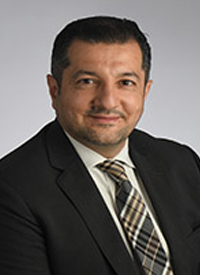Onco-Nursing Experts Define Best Practices, Treatment Considerations for Managing Patients With MPNs
Specialists highlight the best practices and latest treatment regimens for patients presenting with myelofibrosis, polycythemia vera, and essential thrombocythemia.
Listen to your patients.
This was the prevailing guidance from a panel discussion regarding the management of patients with myeloproliferative neoplasms (MPNs). During a Medical Crossfire® held at the 48th Annual Oncology Nursing Society Congress, which was an exchange between onco-nursing experts, the specialists highlighted the best practices and latest treatment regimens for patients presenting with the 3 most common MPNs: myelofibrosis, polycythemia vera (PV), and essential thrombocythemia (ET).
Jill Brennan-Cook, DNP, RN, GERO-BC

However, despite the literature, guidelines, and laboratory data available to guide treatment decisions for these patients, in clinical practice most decisions come down to individual presentations that extend beyond the paperwork. The crossfire was chaired by Jill Brennan-Cook, DNP, RN, GERO-BC, an associate professor in the ABSN program and a member of the Healthcare in Adult Populations Division at Duke University School of Nursing.
Abdulraheem Yacoub, MD

Ilene Galinsky, BSN, MSN, ANP-C

Brennan-Cook was joined by Abdulraheem Yacoub, MD, an associate professor of medicine and clinical director of ambulatory clinics at the University of Kansas Cancer Center, Ilene Galinsky, BSN, MSN, ANP-C, a research nurse practitioner at Dana-Farber Cancer Institute and Brigham and Women’s Hospital, and Brandi Ligon, MS, BSN, RN, AGPCNP-BC, a hematology and oncology nurse practitioner at AdventHealth.
Brandi Ligon, MS, BSN, RN, AGPCNP-BC

Myelofibrosis
Clinical, laboratory, and pathologic analyses are needed to make a diagnosis of myelofibrosis, Yacoub explained in an overview of the disease. Updated major criteria include megakaryocytic proliferation and atypia with reticulin and/or collagen fibrosis of grade 2 or 3; presence of a JAK2, CALR, or MPL mutation or other clonal markers such as ASXL1, EZH2, TET2, IDH1/2, among others, or the absence of reactive myelofibrosis; and not meeting other World Health Organization criteria for myeloid malignancies.2 In addition to these 3 criteria, patients must also present with 1 minor criteria which can include the following: anemia not related to a comorbid condition; leukocytosis at least 11 × 109/L; palpable splenomegaly, lactate dehydrogenase increased above the upper limit of normal; and leukoerythroblastosis.2
“Patients with myelofibrosis have unique presentations and each patient has unique therapeutic needs that requires collaboration between the physician, the nurse, the nurse practitioner, that pharmacist the whole health care system to try to provide better care,” Yacoub said. “There is also a significant education need for practitioners, as well as the patients and their caregivers to teach them more about myelofibrosis, how to approach the disease, and [identify] the unmet needs so that we can work as a team to advance the field.”
Despite MPNs entering clinical discussions nearly a century ago, most of the knowledge and treatments have been generated in the past 15 years, Yacoub explained. As overactive JAK signaling presents as a hallmark of myelofibrosis agents targeting the signaling mechanism have come into use. When JAK/STAT signaling increases, myeloproliferation and abnormal levels of cytokines can trigger presentations of myelofibrosis such as abnormal cell counts, bone marrow fibrosis (which prevents normal hematopoiesis), and splenomegaly, a common occurrence in up to 90% of patients with myelofibrosis.3
The best avenue for the management of patients with myelofibrosis can evolve over time, Yacoub said, but noted that 3 goals are common—reduce splenomegaly, improve symptoms, and improve survival. For example, splenomegaly, chronic inflammation, fatigue, among other symptoms have resulted in reductions in quality of life. “This is a unique feature of MPNs which requires extra attention and examination by providers,” Yacoub said. “There have been tools developed to quantify patients’ symptoms and address them appropriately.”
Finally, Yacoub noted that patients are treated based on symptom burden and risk. Based on the National Comprehensive Cancer Network (NCCN) guidelines, low-risk and intermediate-1 patients should undergo observation if asymptomatic, or ruxolitinib (Jakafi) if symptomatic. They may also be treated for cytopenias and select patients may qualify for transplant.
For those who are high-risk or intermediate-2, transplant, ruxolitinib (platelet count >50), fedratinib (Inrebic; platelet count >50), or pacritinib (Vonjo; platelet count <50) should be considered. Anemia and thrombocytopenia should also be managed appropriately. Alternatively, clinical trial enrollment are options for all-risk patients.4
Despite guidelines for these treatments, the time to progression in myelofibrosis varies with most experiencing progression in the first 10 years of a diagnosis. Long-term, progressive complications such as cytopenias, constitutional symptoms, organomegaly and extramedullary hematopoiesis have been reported, as well as short-term vascular events.1
There is also the potential for evolution to leukemia, which Yacoub noted makes the unmet need for patients who progress on JAK inhibitors of importance.
“We are lucky that the research has identified many targets,” Yacoub said, noting that there is a long way to go.
In a case study of a patient with myelofibrosis, Galinsky, noted that a 75-year-old woman presented with progressive disease that was ultimately defined as post-ET myelofibrosis, along with a prognosis of approximately 8 years after using scoring systems who was about to undergo treatment for symptom management.
“It’s important that, in addition to your clinical lab studies, symptoms are subjective and objective and it’s always important to communicate with your patients,” Galinsky said. “How do you treat these patients? You want to think about where they are in their life. [The case study patient] happens to be older, so she is not a transplant candidate, but at [Dana-Farber] up to 75 years are referred for transplant consult just to get her HLA typing. That’s important to do for all patients. What needs to be done in regard to her symptoms? You want to fix their anemia and splenomegaly, and the JAK inhibitor is the way to go—so we started at low-dose ruxolitinib.”
Galinsky noted it is important to rule out other causes of symptoms prior to starting therapy. “Always in these patients, it’s not always what it looks like. Just because a patient has myelofibrosis, you cannot blame everything on myelofibrosis.”
“My take-home message is always, always look at the patient. Always look at their labs, but always talk to the patient—what are they reporting that their symptoms are?” Galinsky added. “If their numbers are changing and they’re not feeling well, always ask if they are taking their drug. If they are not taking their drug—why? If they are having adverse effects [AEs], it’s our job to help them [manage the symptoms].”
PV
“PV is the most common of the 3 MPNs and shares many characteristics with myelofibrosis…but the hallmark of PV is the excessive production of red [blood] cells, white [blood] cells, and platelets,” Yacoub said. Fortunately, Yacoub said, patients have normal life expectancy with PV and therefore management goals focus on achieving cytoreduction, improving symptoms, and avoiding treatment-related toxicities.
Cytoreductive agents are reserved for patients with high-risk disease and for those with uncontrolled disease manifestations with phlebotomy, which is the immediately available tool to reduce blood counts, Yacoub explained. Aspirin is essential for all patients. In a study of therapies used for PV, it was noted that most physicians were using hydroxyurea either with aspirin or phlebotomy. Even though hydroxyurea is the most common and up to 70% of patients respond to therapy, Yacoub said that for the 30% who do not respond or have resistance, alternative options are needed.5
“Interferons, which are becoming a standard first-line therapy, are still underused,” Yacoub noted. For example, ropeginterferon-alfa-2b-njft (Besremi) was approved for first- and second-line treatment of patients with PV and has shown far superior long-term outcomes compared with hydroxyurea in the PROUD-PV study (NCT01949805).6
“It’s not uncommon for a person to [receive a diagnosis of] PV randomly, just going for blood work and [they] have elevated hemoglobin and hematocrit and sometimes white blood cells and sometimes platelets,” Brennan-Cook said in a case discussion of a patient with PV. “Approximately 30% of patients who are newly diagnosed come in after they’ve had a thrombotic event. So, they find out as they are admitted to the hospital for a [blood] clot that they have PV.”
Brennan-Cook said that any patient with an MPN should be seen by a specialist. “For those of us who work at large academic medical centers that is easy, but a lot of our patients have the travel quite a distance to be seen by an MPN specialist. That confounds a lot of the care that they get and it complicated the treatment because sometimes they have to spend a whole day at the center and they have to drive several hours and that [can] impact adherence.”
Although management of symptoms sounds simple—prevention of thrombotic events being paramount—Brennan-Cook said that maintaining quality of life is also a consideration in nursing interactions. Health literacy has a role in adherence, she noted, and understanding what knowledge patients have at baseline can guide how nurses can best communicate with them regarding treatments. She cited NCCN guidelines as a resource for patients.
Nurses should consider symptom burden, especially fatigue, which is present in approximately 80% of patients with PV. Brennan-Cook said that this can play a role in whether they make it to not only social events but appointments as well. She recommends yoga and motivational conversations that bring the patient into the treatment decision-making, rather than the nurse providing recommendations without patient buy in.
“The symptoms for PV can change,” Brennan-Cook said, highlighting that symptoms such as pruritus may evolve over time and necessitate concurrent treatments. Tobacco use has also been associated with the increased symptom burden.
Finally, Brennan-Cook noted that patients with PV can appear healthy, but the unknown of their disease afflicts them like other oncologic diagnoses. “They know it’s progressive, they don’t know if [their PV] is going to progress to myelofibrosis because approximately 20% progress to myelofibrosis and a small amount to acute myeloid leukemia, but they don’t know when or if it is going to happen,” she said. “So, every month when they are going for their labs that thought is with them. Whatever you can do to work with them, thinking about quality of life, thinking about activity levels, and staying healthy on their own, it’s important to have those conversations.”
ET
The lowest-risk MPN, ET manifests as isolated thrombocytosis, with a high risk of thrombosis and bleeding. Half of patients present with a JAK2 mutation, thrombocytosis, and megakaryocyte proliferation. Additionally, the disease has a high symptom burden.7
“ET is a bunch of megakaryocytes and platelets that take over the bone marrow,” Ligon said in a presentation on clinical observations with ET. Symptoms can present as headaches, dizziness, fainting, and vision changes, which are the most common. Patients may also experience chest pain, numbness, burning sensation in the hands, and bleeding events.
Patients are divided into risk categories based on age, mutational status, and thrombosis history.4 Despite the division based on cardiovascular risk, Yacoub explained that patients should be treated if they are symptomatic regardless of risk status. “For patients who are not high-risk, we treat them based on symptoms,” he said. “This can include cytoreductive agents or observation only or any of the other options that we have.”
Hydroxyurea is a mainstay in treatment for this population, and ruxolitinib is also used in certain cases, but Yacoub added that ropeginterferon alfa-2b is under investigation in the phase 3 SURPASS ET trial (NCT04285086). “Hopefully if these studies are successful the same drug that is used in PV will be approved and an option for patients with ET.” Another agent is bomedemstat, which is an LSD1 inhibitor that targets megakaryocytes, which has demonstrated normalization of platelet counts.8
“What is our role as oncology nurses? The biggest thing is symptom management for these patients, reductions of complications, reducing the risk of thrombus,” Ligon said. “[We also must] make sure that these patients know that when they take hydroxyurea that they are wearing gloves when they administer the medication because they can cause toxicities through the skin.”
Ligon noted that there is an MPN symptom management app available for patients.9
What’s Next?
As for the future of MPNs, the panel noted that as more medicines are introduced and diagnoses are made earlier through educational efforts, a new wave of treatment may emerge.
“We’re making major progress at all aspects of MPNs,” Yacoub said. “We’re a lot better at making a diagnosis now, we have better tools, we are doing whole genome sequencing or next-generation sequencing, so we are learning a lot more about disease biology and are describing it better. We have a much more informed discussion with patients about their futures now.”
“Being able to target some of these mutations with the drugs that are coming down the pipeline, would allow these patients to have more control and have more personalized medicine when it comes to treating these diagnoses,” Ligon said. “I also like that some of our community physicians can be an asset to the physicians at the bigger centers. A lot of times, they can work in conjunction together so that patients do not have to travel as far, maybe only every 3 months, or so.”
“Communication and collaboration make a big difference,” Brennan-Cook concluded.
References
- Brennan-Cook J, Galinsky I, Ligon B, Yacoub A. Medical Crossfire®: exchange between onco-nursing experts on MPN treatment and symptom management along the care continuum. Presented at: 48th Annual Oncology Nursing Society Congress; April 26, 2023; San Antonio, TX.
- Arber DA, et al. Kvasnicka HM, Orazi A, et al. The international consensus classification of myeloid neoplasms and acute leukemias: myeloproliferative neoplasms. Am J Hematol. 2023;98(3):544-545. doi:10.1002/ajh.26821
- Spivak JL. Myeloproliferative neoplasms. N Engl J Med. 2017;376(22):2168-2181. doi:10.1056/NEJMra1406186
- NCCN. Clinical Practice Guidelines in Oncology. Myeloproliferative neoplasms, version 3.2022. Accessed April 26, 2023. https://www.nccn.org/professionals/physician_gls/pdf/mpn.pdf
- Grunwalk MR, Kuter DJ, Altomare I, et al. Treatment patterns and blood counts in patients with polycythemia vera treated with hydroxyurea in the United States: an analysis from the REVEAL study. Clin Lymphoma Myeloma Leuk. 2020;20(4):219-225. doi:10.1016/j.clml.2019.09.601
- Kiladjian JJ, Klade C, Georgiev P, et al; PROUD-PV Study Group. Long-term outcomes of polycythemia vera patients treated with ropeginterferon alfa-2b. Leukemia. 2022;36(5):1408-1411. doi:10.1038/s41375-022-01528-x
- Arber DA, Orazi A, Hasserjian R, et al. The 2016 revision to the World Health Organization classification of myeloid neoplasms and acute leukemia. Blood. 2016;127(20):2391-405. doi:10.1182/blood-2016-03-643544
- Gill H, Palandri F, Ross DM, et al. A phase 2 study of the LSD1 inhibitor bomedemstat (IMG-7289) for the treatment of essential thrombocythemia (ET). Blood. 2022;140(suppl 1):1784-1787. doi:10.1182/blood-2022-159047
- The MPN Genie. Canadian Research Foundation. Accessed April 26, 2023. https://www.cmpnrf.ca/genieapp


